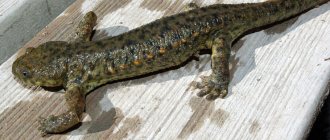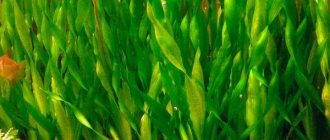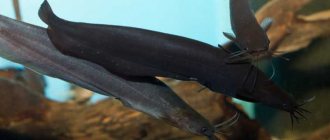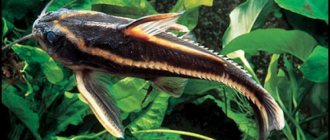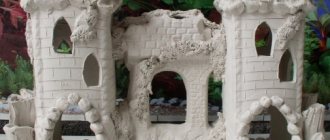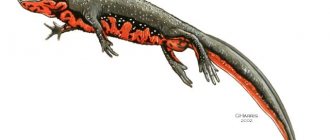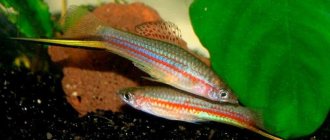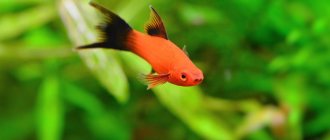The Spanish newt or Spanish spiny newt is a tailed amphibian from the genus of small newts.
This animal was named so because of its natural habitat, as well as in accordance with its external characteristics. On the triton's body there are protrusions on the sides that cover the ends of the ribs. Such devices are hidden weapons. If a predator grabs a newt, the tips of the ribs will pierce the skin and dig into the enemy, and they contain poison that kills the attacker.
Due to the glandular projections on the back, the body of the spiny newt looks square when viewed from a transverse position. The amphibian's tail is flattened laterally; as a rule, it is larger than the entire body or approximately the same in length. The limbs of males are larger and longer compared to females. Also, during spawning, a comb forms on the tail of males, the cloaca becomes spherical and stands out strongly.
The spiny newt's ribs resemble tubercles. The skin is smooth and shiny when the amphibian lives in water, but when living on land for a long time, the skin dries out. The color of newts is very diverse - yellow, brown, white, olive, gray-black. Females are much darker. In addition, spots often form on the body of newts, and males have a distinct silvery stripe during breeding. The abdomen of amphibians is yellow, pinkish or light orange. Over time, the skin on the sides becomes lighter. The eyes are small, but convex and have a golden hue. Adult animals in the aquarium grow up to 20 cm in length and can live for about 12 years, molting periodically.
Keeping Spanish newts in an aquarium
The Spanish newt, bosca newt, or spiny newt (lat. Lissotriton boscai) is a tailed amphibian of the genus small newts.
It was first described by the Spanish zoologist E. Bosca, after whom the animal was named. Triton is a native of Spain and Portugal (regions of Asturias, Andalusia, Toledo, Galicia, Salamanca), and is not found anywhere else in nature. It is interesting that the habitat coincides with the distribution areas of the fire salamander - where it is not found, newts are not found. The species is protected by Spanish law. Where they live there is a lot of moisture, although sometimes they come out onto land. Wetlands, lakes, freshwater rivers, mountains and sands - these amphibians are found almost everywhere. They are unpretentious to water acidity and live in reservoirs with a pH level of 4.0-9.0. Life expectancy in nature is about 8 years. Due to their resistance, they have become common inhabitants of home aquariums.
In the last decade, the population of Spanish newts has declined due to the disappearance of reservoirs and their drying out for the purpose of urbanization. The average length of an adult is 10 centimeters. Females are longer and larger than males.
Appearance
The Spanish newt has a square body shape in the transverse perimeter due to glandular formations on the back. The shape of the tail is flattened on the sides, the tail is larger than the body size or approximately the same. The limbs of males are longer than those of females. During the spawning period, a comb appears on the male’s tail, the cloaca enlarges and becomes spherical, and in females the cloaca takes on a conical shape. The edges of the ribs resemble needle-like tubercles, which have a protective function - when attacked by a predator, poison is released from the needles, poisoning the pest.
Look at the Spanish newt in the aquarium.
Spanish newts have smooth skin that shines when living in water, and dries out when living on land. The color of newts is varied: there are brown, yellow, olive, white, and grayish-black newts. The females of these amphibians are usually darker. Animals may have spots on their bodies. When the breeding season begins, a silver line appears on the body of males. The abdomen of amphibians is yellow, orange or pink. Bosca amphibians become lighter in color as they age. Their eyes are small, but convex with a golden tint. In an aquarium, an adult reaches a length of 20 cm and lives from 8 to 12 years. Periodically sheds, eating its dead skin.
Keeping in an aquarium
The Spanish newt is a long-liver of the reservoir. One adult requires 15-20 liters of water. One large aquarium can contain several newts. The water height should be at least 25 cm; sometimes the animal will visit the surface, inhaling atmospheric oxygen. Breeders recommend covering the tank with a lid; pets can actually escape. But make sure he feels comfortable. The ideal home for newts is an aquaterrarium with water, stones, and plants.
It is recommended that the soil be large so that the animal does not eat it - pebbles. Some aquarists plant plants, others do not, it all depends on the lighting. The water temperature should be no higher than 20 degrees. Various devices are used to cool the reservoir, but it is better to use special ones rather than handmade ones. Filtration, aeration and water renewal once a week, 20% of the volume are also necessary conditions.
In the aquarium, the Spanish newt feeds on earthworms, bloodworms, pieces of shrimp, squid, and chicken liver. Food is served directly to the face using tweezers or hands. Feeding infrequently - 2-3 times a week, feed him at one meal until he stops eating. Young animals aged 2-3 years are given food daily. Once a month, the spiny newt is fed with vitamins for amphibians.
It is better not to house them with other fish - amphibians often become victims of attacks: despite the fact that the limbs of the body are regenerated, it is better to keep them separately.
Watch the courtship of a Spanish newt.
Breeding
At the age of one year, Bosca amphibians become sexually mature and reproduce freely. In the wild, one female mates with several males over several days, laying oval eggs on the inside of plants, gluing the leaves in half. If the pets start breeding in the aquarium, the eggs are defenseless. After 2 weeks, small larvae will appear. The number of fry is from 100 to 250. The first food is daphnia. It is advisable to place the young animals in a separate tank to create comfortable housing for them.
AkvariumnyeRybki.ru>
Nutrition
The Spanish newt is a predator, so the amphibian’s diet should consist mainly of live food. Adult pets are fed several times a week, young newts – every day. You can feed amphibians with the following products:
- Worms and snails.
- Bloodworm.
- Bugs.
- Grasshoppers, crickets, etc.
It should be noted that live bloodworms should not often be given to pets, and lard and meat must be completely excluded from the diet. Sometimes pets are pampered by giving delicacies: liver, seafood and poultry giblets, pre-chopped. Food is given using tweezers or thrown into water. If the pets are not fed on time, then the Spaniards, out of grief, will eat their neighbors, or even relatives.
Spanish newt: contents
It is impossible not to note that this type of newt is recognized by scientists as the most outstanding due to its unprecedented length
But it is also worth noting that, apart from length, they do not have any other pronounced features that distinguish them from other newts
The color of this type of amphibian is very discreet and ranges from green to gray-green. But the color is not uniform, and the abdomen has a yellow color characteristic of this species.
In nature, newts tend to be exclusively nocturnal; Accordingly, feeding and hunting also occur at night. Inhabits mainly coastal areas with standing water within Morocco. If the decision has been made, and you have a Spanish newt, the contents of which are yet to be thoroughly understood, you must take into account that in nature it spends most of its time in water, and, accordingly, because of this, it must be kept in a fairly long horizontal aquarium.
A terrarium that is classified and fits the swamp type is also quite suitable. This is a necessary condition, since the newt must move freely and be able, if necessary, to enter the artificially created bank for it.
The bottom of the aquarium or terrarium must be arranged by pouring small pebbles and using it to build a shore. To create the latter, you can use both stone and trees. Also keep in mind that the newt needs not just scattered areas of greenery in the aquarium, but several islands of thickets. Amphibians need them not only as shelter, but also as a place where they can lay eggs and breed offspring.
Newts, whose overall content is similar to each other, have some differences according to their habitats in nature and the skills and instincts acquired in the process of evolution. Newts can be kept several in one aquarium or terrarium, since they do not have a tendency to eat their neighbors, and they can get along well in the same territory. It is noted that up to seven newts can be placed in one aquarium.
Just consider the fact that one amphibian requires a bottom of approximately one square meter. Since the animal lives in warm countries, the water temperature must be appropriate and not fall below twenty degrees. You can feed the newt with ordinary insects, ranging from worms to small bugs.
From the editor: Аquarium for a child
8lap.ru>
Spreading
Its habitat covers most of the European continent and the western regions of Asia. In the north it reaches Norway, Sweden and Finland, and in the west it reaches France and Great Britain.
The species is widespread in the countries of Central and Eastern Europe. In the south, the boundaries of the range pass through Serbia, Romania, Hungary, Moldova and Ukraine. In Russia, Tristatus cristatus is found mainly in the western part of the country up to Kazakhstan and partly in the Kurgan region in Southwestern Siberia.
The amphibian prefers to settle in lowlands. In mountainous areas it is observed at altitudes up to 700-850 m above sea level.
Today, taxonomists distinguish 4 subspecies based on the color, size and proportions of individual body parts. The most widespread is the nominate subspecies, covering the territory from France to the Urals and from Scandinavia to the Black Sea. It is characterized by an abundance of light spots on the sides and dark spots on the belly.
The subspecies Tc carnifex is distributed in Italy, Austria, Serbia and Montenegro. It is characterized by a smoother skin and large gray spots on the abdomen. In females, a yellow stripe is often visible near the spine.
The subspecies Tc dobrogicus is found in the plain and Danube Delta. It is distinguished by its smallest size in comparison with its closest relatives. It has rough skin that is brown or reddish in color. On the ventral part of the body there are darkish spots in two rows.
Tc karelinii lives on the Balkan Peninsula and southwestern Russia. It is characterized by smooth skin and slight spotting with a bluish tint.
Varieties:
The crested newt is the largest individual, capable of growing up to 18 cm in length. During the breeding season, a jagged, expressive formation in the form of a crest is formed on the male’s back, giving the animal a resemblance to a dragon. This formation occupies the entire upper part of the body (from the crown to the edge of the tail).
The Asia Minor newt is slightly different from this species
If you do not take into account its smaller size (up to 12-14 cm), the height and jaggedness of its crest is striking. This rather rare species looks slightly menacing and shocking.
The filamentous newt is even smaller in size, its dimensions do not exceed 6 cm
His appearance is softer and more familiar, and his character is less aggressive.
The dwarf newt, which has a second name: fire-bellied, is very extravagant. This term did not arise spontaneously, but due to the bright and catchy red color of the amphibian’s abdomen.
What are the features of their life?
The aquarium newt cannot be called a mystery of nature, but it still has a number of mysterious properties. Having a cold-blooded nature, reptiles prefer the water temperature in the aquarium no higher than 22o. Newt Karelina, for example, is able to reproduce in water with a temperature of 6°C. Therefore, if there is a potential for heating water, for example, from a lamp, a cooling device should be provided.
Triton Karelina
The Iranian newt, which has an indescribable range of color combinations (orange belly, white sides and black back), like many species, likes to bask on the “sunny terrace” equipped directly next to the aquarium. Only with such improvement can a little friend be healthy and beautiful.
Iranian newt
The tailed amphibian marbled newt is interesting. The coloring of its surface allows it to be invisible against the background of silt or dense aquarium vegetation. The bright green intricate pattern on a dark background is a kind of natural mimicry that allows you to adapt to life in an aquarium with predators.
Marbled newt
Reproduction
Spaniards reach sexual maturity at the age of one year. Male representatives are distinguished from female representatives by size: females are larger than males. Mating games among pets begin in September and continue until May, when the male amphibian transfers a spermatophore to the female.
After the transfer, fertilization occurs, and a day later the female lays up to a thousand eggs. To preserve future offspring, the parents are immediately removed from the container after laying, otherwise the eggs will be eaten.
The temperature in the aquarium with caviar is maintained at 22-24C. Ten days later, larvae will appear, which in 2-3 months will already grow to 6-9 cm in length. At this age, babies are moved into tanks with adult newts.
The Spanish newt is an amazing amphibian that has an attractive appearance and intelligence: the pet is able to recognize its owner and rejoice at its approach. Keeping newts in an aquarium is easy, and if you follow simple rules of care and feeding, you can observe the interesting behavior of amphibians for a long time.
Chinese giant salamander
The largest modern tailed aphibia and aphibia in general is the Chinese giant salamander (lat. Andrias davidianus). Its length can be up to 1.83 meters, and its weight can be up to 64-70 kg. With such dimensions, she can compete with the man himself. This amphibian lives in Eastern China (from the southern part of Guangxi province to the northern part of Shaanxi). Prefers to live in cold and exceptionally clean mountain reservoirs.
Content Features
Keeping a Spanish newt in an aquarium is a fascinating undertaking. To avoid any problems, several conditions must be observed.
- Storage tank. To keep 2–3 amphibians, a container with a volume of 60–80 liters is required.
- Water. Before pouring into the aquarium, the water is allowed to settle for 2-4 days so that impurities settle to the bottom.
- Cleaning. To prevent the liquid from blooming or becoming cloudy, the aquarium is equipped with external or internal filtration units. The tank is not supplemented with aeration units. After all, amphibians do not inhale oxygen dissolved in water.
- Substrate. To fill the bottom, pre-crushed granite chips are used, the preparation rules for which are demonstrated in the video. Shade plants and algae are planted around the perimeter.
- Decoration. To decorate an aquarium with needle reptiles, clay shards, tunnels, driftwood, and other elements are used. After all, from time to time the amphibian hides from others.
- Temperature conditions. For successful maintenance, it is necessary to observe the temperature regime. Since newts are considered cold-blooded animals, the temperature in the container is maintained at 15–20 degrees. To optimize the temperature in summer, cooling units are used. They are purchased in specialized stores.
Diet in nature - what does an ordinary person eat?
The gastronomic preferences of the snake are quite monotonous - frogs and fish. Periodically, it includes other prey of suitable size in its diet. It can be:
- newts;
- toads;
- lizards;
- chicks (fallen out of the nest);
- newborn water rats;
- insects and their larvae.
Snakes disdain carrion and do not eat plants, but they willingly drink milk when they are in a terrarium
This is interesting! There is a known case when a forced hunger strike lasted 10 months. He was subjected to this test by a German naturalist who did not feed the experimental subject from June to April. The first feeding of the snake after the hunger strike passed without any deviations from the gastrointestinal tract.
Conditions of detention
Red-bellied newts, unlike many other amphibians, are considered purely aquarium animals. This means that the equipment of an aquaterrarium with a full-fledged land area is not necessary for them; it is enough to have a small cork or foam island in the aquarium, part of which will be flooded so that the animals can get out onto it. Instead of an island, you can put a snag overgrown with moss or anubias, which will protrude from the water - it will additionally serve as decoration.
For a pair of newts, you will need an aquarium with a volume of 15-20 liters, always with a tightly closing lid, since they easily climb vertical glass walls and often escape, crawling into the smallest cracks, for example, into holes for wires and hoses.
Water is poured to a level of about 20 cm. It is very good if there are living plants in the aquarium, preferably hard-leaved ones or those that form large floating leaves. Small shelters are provided.
Some authors indicate that newts require an ultraviolet lamp and about 10 hours of daylight; according to other sources, they do not need light, and the lamp is installed only if there are live plants in the aquarium. Some of my newts live with light, and some live without it, no difference in their well-being is noticeable.
One of the main and difficult conditions for keeping newts is water temperature. It should be quite low, ideally 20-22°C, maximum 25°C. At higher temperatures, animals are at increased risk of disease and have a shorter lifespan.
If the aquarium does not have a special cooling system, and the room does not have air conditioning, then the easiest way to cool the water during the hot season is using a computer cooler or bottles and ice packs from the freezer. The main thing is that the temperature change is not sudden.
Otherwise, newts of this species are undemanding. They are able to live in water with different physical and chemical characteristics (they are sensitive only to chlorine, so the water must be left for at least a day and it is advisable to use dechlorinators), and they easily tolerate temporary organic pollution. Being intelligent animals and not particularly voracious, they themselves pollute the water a little, so a small filter without aeration is sufficient in the aquarium.
Newts do not need oxygen dissolved in water; they float to the surface for air. The water flow regulator from the filter should be set to minimum, since newts do not like strong currents. Siphoning the bottom and changing the water in the aquarium should be done once every week or two.
Features of aquarium keeping newts
Newts that can live in an aquarium are most often small individuals, the average size is 15 cm. However, there are both small (7-8 cm) representatives and “giants” (25-30 cm). Male newts of some species have one feature - when forming pairs and during the spawning period, they develop a luxurious crest, located along the entire back to the very tip of the tail.
Editor's note: Red-eared slider
Such handsome men cannot but arouse interest. When you see them, you want to get yourself an equally exotic pet. But in order to provide the pet with comfortable conditions, the future owner needs to take care of the following:
Housing - an aquarium can be used in this capacity. You can place a small floating island or a horizontal aquaterrarium on the water with a ground area rising out of the water. The volume of the “house” depends on the size of the individual and can vary from 20 to 50 liters - for one pair of newts.
Soil must be present; it is best to use gravel without sharp edges or small pebbles.
Filter – a powerful device is installed in the tank.
Vegetation – it should be both in the aquatic environment and on land. Newts are quite delicate and neat, they will not spoil the landscaping
It is important that some types of plants have small, soft leaves. These amphibians wrap their eggs in them.
Inhabitants need shelters both in the aquatic and coastal zones
You can use coconut shells, clay shards, and tree bark.
The newts' home must be equipped with a lid - a reliable one that closes well, since these agile amphibians are prone to escape and show extraordinary ingenuity. If the newt is small, then you should make sure that the smallest holes in the tank are sealed.
Temperature indicator of water and air - beginners may have difficulties with this point, since amphibians need a stable low temperature. For some species it is 18°-21°C. When living in a warmer environment, individuals' metabolic processes in the body accelerate, but more often they get sick, and life expectancy is reduced.
To keep the temperature low, you can use a computer cooler that cools the water by 1°-3°C, or bottles filled with ice cubes that are replaced regularly. The most ideal option is to equip the container with a special cooling system for aquariums, but such a device is quite expensive.
The most common aquarium inhabitants are spiny newts and Chinese dwarf newts. They are more thermophilic and can live at temperatures of 24°-25°C. However, these are far from the only amphibians of this group that act as pets.
Description and aquarium species
Despite the fact that newts are common in many parts of the planet, it is quite difficult to see them in the natural environment, since they are nocturnal. These animals can have different colors depending on the species. Their body length ranges from 7 to 30 cm, with half of the total length coming from the tail. There are membranes between the toes on the paws, allowing the newt to move easily in the water.
During spawning, females change color, becoming brighter. Males of some species develop a striking dorsal crest running from head to tail.
These amphibians have a keen sense of smell, but their vision is rather weak - they only see moving objects. Their body temperature is 10-15 °C. Sexual maturity is reached at 3 years of age. Life expectancy at home with proper care is up to 20 years.
The body length of newts ranges from 7 to 30 cm, with half of the total length coming from the tail.
The aquariums contain more than 10 species of animals. The most common of them are:
- ordinary;
- comb;
- spiny (ribbed);
- red-bellied.
The common species, as a rule, grows to 9-11 cm. It is distinguished by its beautiful color: the back is brown-green with yellow spots, the belly is yellow, and there are dark longitudinal lines on the head. The skin is smooth. Males have a dorsal crest.
The crested varieties of the amphibian have a dark brown or black back and an orange belly. The color of males is brighter than that of females. They grow up to 18 cm in length. During spawning, males have 2 ridges - on the back and tail
This species should be kept at home with extreme caution, since crested newts can secrete a toxic substance through their skin glands for self-defense.
During spawning, female newts change color, becoming brighter
Spiny or ribbed received this name because of the tips of the ribs sticking out on the sides of the abdomen. While the amphibian is calm, these ribs are hidden in skin tubercles, but as soon as it becomes agitated, a protective mechanism is triggered and the ribs turn into real needles. This species reaches a length of 30 cm. The back of the animal is dark green with dark spots, and the belly is light yellow.
Courtship ritual
As soon as the female appears, the male begins to signal her with his tail, inviting her to his area. Having discovered the marks and made sure that the male is behaving friendly, she perks up, excitedly moves her head, opens and closes her mouth, and makes sharp turns. The male sniffs her, demonstrates his tail and begins the courtship dance, which consists of special movements of the body and tail. The male circles around the female, follows her, stands upside down, then makes a strong jerk with his tail. After this, the female relentlessly follows the male, fascinated by the movements of his tail. The male newt lifts its tail up and deposits a spermatophore. The female crawls onto him, grabs him with the edges of her cloaca, and the mating act is completed. Courtship dances can take place: on the bottom, on underwater plants and in the water column.
Related article Toxicity of newts and salamanders
Can newts be kept with other animals?
For all types of newts, a species-specific aquaterrarium, that is, containing individuals of only one species, is preferable. Moreover, for some aggressive species, for example, Asia Minor or Pachytriton, the number of animals in one container should be limited, and shelter should be provided for each.
Sometimes it is possible to keep together peaceful, similar in size, related species of newts, for example, dwarf and blue-tailed ones, but in this case you need to carefully monitor so that the animals do not offend each other.
Keeping amphibians with fish is undesirable for several reasons:
- fish, as a rule, require different conditions of detention - higher temperatures and a larger volume of water;
- large predatory fish can harm the newts, and the newts themselves will try to eat small ones;
- the skin glands of some amphibians secrete poisonous mucus;
- in the presence of nimble fish in the aquarium, the slow newts will not get food, unless you feed each of them personally with tweezers;
- fish and newts have many common diseases, while treatment regimens for amphibians are much less developed, so it may turn out that newts die from a disease that fish can easily tolerate.
Therefore, keeping newts with other aquarium animals is not recommended. If you really want to add color and movement to a calm newt, as an exception to small warm-water newts (dwarf or young Spanish) you can place:
- not too small unpretentious fish such as guppies or platies;
- small, calm catfish, for example, corydoras;
- cherry shrimp (but you need to keep in mind that their young will certainly go to the newts for lunch);
- Hymenochirus frogs;
- large beautiful snails, for example, my snail is very decorated with blue and blueberry ampularia.
However, the aquaterrarium with newts does not need special decoration. These amphibians themselves are very attractive and interesting, and some difficulties in their maintenance should only add excitement to the owner.
The largest amphibians
Amphibians, or amphibians (lat. Amphibia) are vertebrates that spend part of their lives on land. These include the well-known tailless amphibians - frogs and toads (as well as spadefoots and toads), tailed amphibians - salamanders and ambystoms, newts, as well as legless amphibians - caecilians - tropical creatures that look like worms.
Amphibians are relatively small creatures; among them you will not find such giants as among reptiles or fish. But even among amphibians there are their champions, ready to declare themselves to the whole world. We will now tell you about the most famous large amphibians.
How to care for a newt
Keeping newts is not particularly troublesome, but for their longevity and good health, it is important to adhere to the following recommendations:
At the very beginning of designing an aquarium, you need to make sure that it has an above-water part located away from the lighting lamps. This unique island is used not only for resting pets, but also for feeding. The aquarium itself should be horizontal and quite large, since one individual requires at least 10 liters of water. This indicator is taken as the basis for calculations, because if a group of newts, fish and plants live in the water, the volume of the aquarium must be sufficient for all inhabitants. Important indicators are acidity and water hardness
From the editor: A riddle about the compatibility of aquarium fish
They should be in the range of 5 to 15 dGH and 5.5 to 7.8 pH, respectively. It is important to monitor the water temperature, the optimal indicator is 18-22 degrees. In this case, living conditions will be as close as possible to natural ones, and newts will get sick less
An increase in temperature is unacceptable; it will cause irreparable harm to pets. Therefore, fluorescent lamps are used for lighting, which do not heat the water in the aquarium. In the summer, you need to take care of cooling; for this, use ice bottles or special devices. The quality of the soil is important; it should not be too shallow, otherwise pets will easily swallow it and may die. The aquarium must have a filter and the water must be changed every week. An aerator is not necessary, since pets will periodically get out onto land. The flora should only be real; you should not use artificial plants when decorating an aquarium. This is connected with the reproduction of newts: the female wraps each egg in a separate leaf for further maturation. You can feed the newt with live food, finely chopped beef liver, shrimp and squid. Additionally, the diet includes synthetic fertilizers for amphibians, which are rich in vitamins and minerals. Particular attention should be paid to the quality of food, since contaminated or stale food provokes the occurrence of numerous diseases in newts. Individuals can get sick due to changes in environmental conditions, poor quality food, and constant stress. They are often affected by fungal infections, sepsis and dropsy. If any suspicious changes occur, the individual is quarantined and a specialist is invited to make a diagnosis. Self-medication will not solve the problem, and the newt may die. When keeping newts, it is important to remember that from the end of October they begin a two-week hibernation period. Therefore, the water temperature in the aquarium is lowered, and pets are given access to shaded areas.
Caring for newts may seem difficult for beginners, but gradually it will become more familiar and will not take much time afterwards.
How long do newts live?
In captivity, due to the abundance of natural enemies, individuals rarely live beyond 7 years. In captivity, with a well-formulated diet and suitable living conditions, you can count on 15–20 years.
Pets begin to reproduce at the age of 3, so after a while there will be no need to acquire new individuals.
Allegheny cryptobranch
Allegheny cryptobranch (lat. Cryptobranchus alleganiensis). flickr/mattrgraham
And the third representative of this order is the Alleghenian cryptobranch (lat. Cryptobranchus alleganiensis). It weighs only 1.5 to 2.5 kg, but is considered the largest member of its family Cryptobranchidae, found in North America. This small and squat amphibian spends its entire life at the bottom of streams and rivers.
How to care for a newt
Caring for newts at home does not pose any difficulties. By observing a number of requirements, you can protect amphibians from diseases and other troubles.
The minimum permissible volume of water is 15–20 liters per individual. When breeding a group of newts, it is worth considering that they love space. Newt must be kept at a temperature of 20–22 degrees. The habitat in which they will live should be created the same as in the wild
Since amphibians are cold-blooded animals, a drop in temperature has a painful effect on their condition. The acidity level of the water should not exceed 8 ph. Water hardness should be 10–12 dGH. The choice of lighting must be approached with caution, as heating the water should be avoided. Fluorescent lamps are best suited. When choosing soil, you need to pay attention to its fractions. They should be slightly larger than the amphibian’s head, since an individual can swallow a pebble along with food. In the summer, it is necessary to cool the water, as the air temperature increases noticeably. You can purchase a special device at a pet store
A budget option is to cool the tank using ice bottles. When setting up an aquarium, it is recommended to take care of the land areas that amphibians love so much. Water filtration is carried out every few days. Change about 20–30% of the water weekly. Keeping newt, as well as further reproduction, is recommended if there are live aquarium plants in the tank. The female lays her offspring on algae leaves. During development, eggs need shade, which artificial plants cannot create.
What do newts eat?
When keeping amphibians in a tank, every aquarist is faced with the problem of what newts eat.
To maintain a healthy appearance of amphibians, it is necessary to add various trace elements and minerals to their food. At the pet store you need to purchase synthetic food for amphibians, enriched with calcium and other useful components. Individuals do not feed on plants, so there is no need to worry about their integrity.
Newly hatched babies should be fed daily as they actively eat and grow. When preparing meals, it is necessary to take into account the daily protein intake. During growth, small crustaceans or insects can be used as food. After the kids grow up a little, it is recommended to give tubifex and bloodworms.
It is better to feed the newt with tweezers than to feed the newt in water. Over time, uneaten remains settle to the bottom and contaminate the tank.
Newt eats shrimp
How long do newts live?
As practice shows, at home the individual lives much longer. This is due to the fact that in captivity animals have many enemies, since they are small in size. In the wild they can live up to 10 years. The average standard of living is 7 years.
In wildlife, their numbers are constantly declining, as many water bodies are polluted due to human activity. Some of the species are listed in the Red Book.
Wintering
When keeping these amphibians, it is necessary to take into account that the newt animal is going through a wintering period. It is usually inactive at this time. This period begins at the end of October or the first half of November. The common newt looks for a wintering place and stays there for two weeks. The recommended temperature for this period is 15 degrees.
conclusions
The exact diet of newts varies depending on the type of individual and its specific habitat. In the wild, amphibians are aggressive species and will eat any small and soft organisms in their environment.
On the other hand, all newts do well on aquarium food such as frozen moths, brine shrimp, and crushed earthworms. Some species will refuse certain types of food in captivity, so experimentation is recommended. Newts, when in captivity, always need an additional source of food, since it is impossible to provide adequate nutrition for aquarium representatives.
